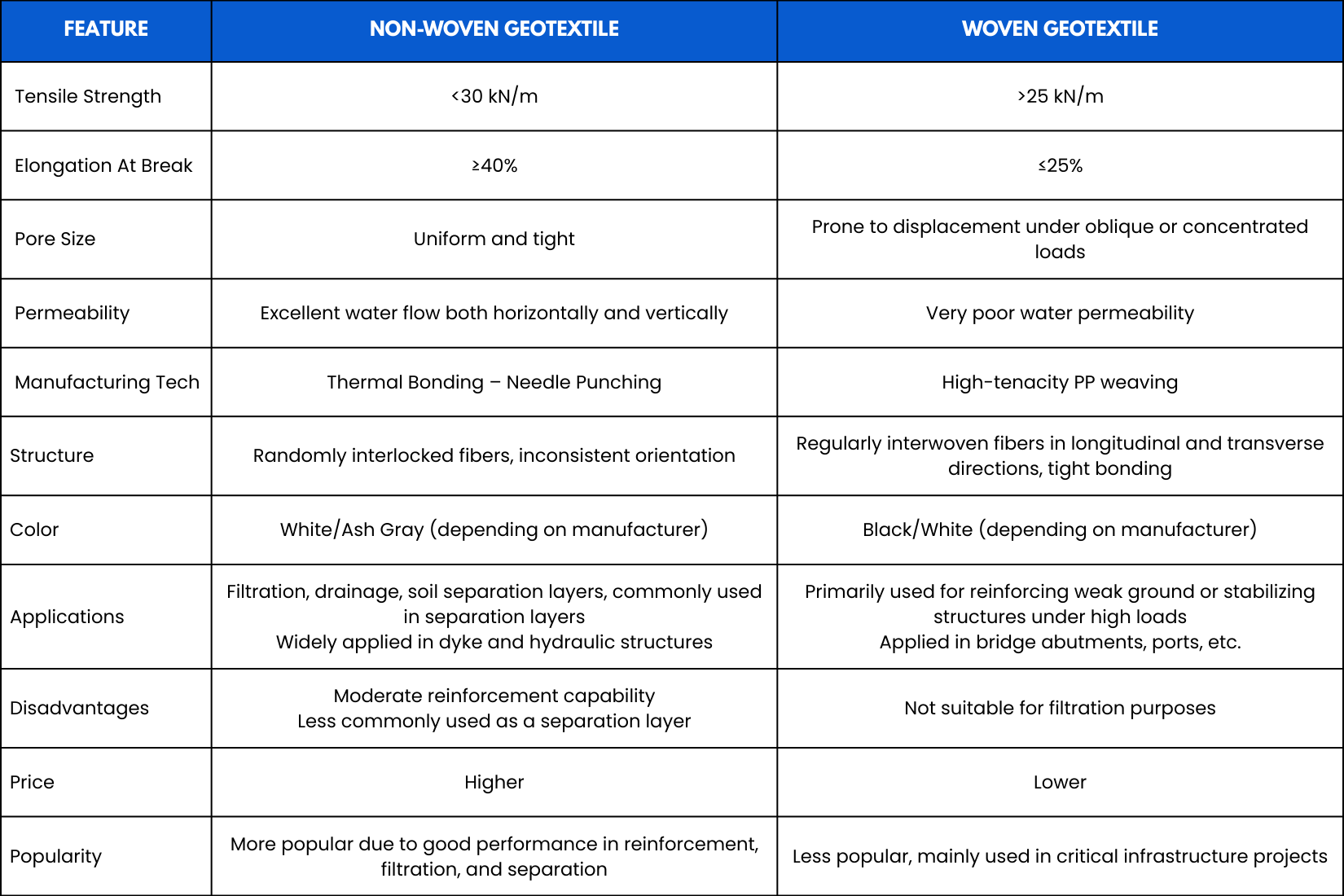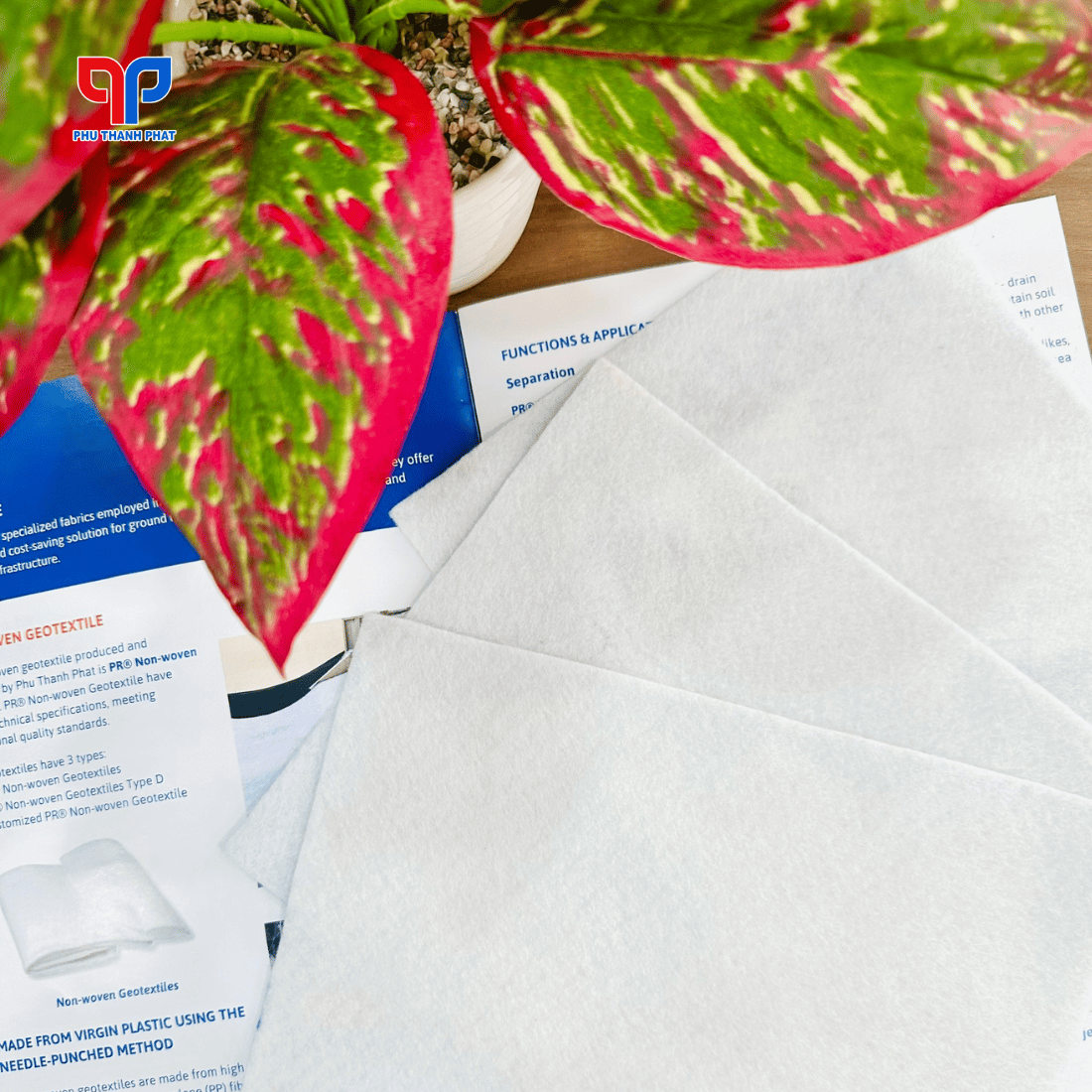Geotextiles are commonly available in two main types: woven geotextiles and non-woven geotextiles. So, what are the differences between these two? Do their applications and usage vary? When should woven geotextiles be used? When should non-woven geotextiles be applied? Let’s delve into a comparison of woven and non-woven geotextiles in the following article by Phu Thanh Phat!
Woven Geotextiles – Non-Woven Geotextiles
Both woven and non-woven geotextiles are geotechnical products widely utilized in construction projects. These fabrics play a crucial role with three primary functions: reinforcement, separation, and drainage. As discussed in our previous article “Geotextiles” shared by Phu Thanh Phat, we have already established the definitions of woven and non-woven geotextiles. In this article, we will provide a detailed comparison and differentiation between these two types.
Comparing Woven and Non-Woven Geotextiles
Similarities
- Both are materials within the field of geotechnical engineering.
- Both are composed of 100% virgin Polypropylene (PP) or Polyester (PET) fibers.
- They share common applications in transportation, environmental, hydraulic, agricultural projects, and areas with weak ground conditions.
- Both types of geotextiles possess the three main functions:
- Separation of weak ground layers
- Resistance to UV radiation and environmental degradation
- Soil reinforcement and stabilization
Differences

Table 1 – Comparison of Differences Between Woven and Non-Woven Geotextiles
When to Use Woven and Non-Woven Geotextiles?
When to use woven geotextiles?
Woven geotextiles are primarily utilized for soil reinforcement and foundation stabilization in critical infrastructure projects such as container ports, railways, airports, and heavy-load infrastructure like highways, overpasses, and tunnels. Woven geotextiles maximize their load-bearing capacity in these applications. However, their drainage capacity is quite limited, making them unsuitable for projects with high filtration and drainage requirements, such as hydraulic structures.

When to use non-woven geotextiles?
In contrast to woven geotextiles, non-woven geotextiles have a wide range of applications in construction and even agriculture due to their versatility. They effectively address all three key functions: filtration, drainage, separation, and reinforcement. This makes them a popular and preferred choice in many situations. Common applications include geotextiles for planting, weed control fabric around tree bases, dyke construction, and hydraulic engineering projects.

Conclusion
While woven and non-woven geotextiles share similarities in composition and basic functions, their applications differ significantly. Woven geotextiles are mainly used for reinforcement, whereas non-woven geotextiles excel in filtration and drainage. However, non-woven geotextiles generally have a higher cost compared to woven geotextiles with similar tensile strength. Distinguishing between these two types based on color and appearance is usually straightforward. For more detailed information on pricing or to address any inquiries, please contact Phu Thanh Phat immediately!
CONTACT INFORMATION
Head Office: 15 Street 5, Vinh Loc Residential Area, Binh Hung Hoa B Ward, Binh Tan District, Ho Chi Minh City
Hotline: 028.666.03482 – 0909.452.039 – 0903.877.809
Email: info@vaidiakythuat.com
